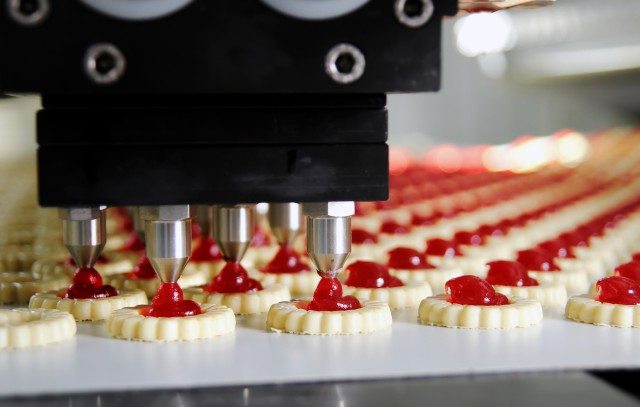The digitization of production has set in motion a comprehensive change in automation that many experts already refer to as the fourth industrial revolution.
Where today’s food industry plants are centrally controlled, future cyber-physical systems will take command and organize production themselves.
Trade visitors to Anuga FoodTec exhibition can experience how real the convergence of production and enterprise information technology (IT) already is and the challenges involved for automation between March 24 and 27, 2015 in Cologne, Germany.
The show is jointly organized by Koelnmesse GmbH and the German Agricultural Society.
Industry 4.0 will be the buzzword in many booths of this international trade fair for food and beverage industry suppliers.
Almost 200 companies of more than 1,400 exhibitors will present solutions in the field of automation at the fair, including Siemens, Rockwell, B & R, Endress + Hauser, Festo, Mitsubishi and CSB.
After mechanization with steam power, mass production on assembly lines and digitization, comes Industry 4.0.
To ensure that production becomes more flexible and more efficient, machines and products need to communicate with each other like in a social network.
The factory of the future will be intelligent and networked.
Machines and work pieces mutate into cyber-physical systems that organize production themselves using sensors, actuators, and small embedded computers across company boundaries.
One example of the change in the mindset is robotics.
While industrial robots still perform their tasks behind safety barriers, lightweight robots will soon assist humans without a fence and rigid controls.
Machines issue commands
The autonomously functioning food factory still lies in the distant future.
However, the advent and popularity of internet technologies and their associated networked machines cannot be halted.
The Internet Protocol (IP) IPv6 has laid the foundation for the “Internet of things,” where every object could theoretically receive its IP address.
However, Industry 4.0 means much more than providing machines with IP addresses.
It is about the convergence of production and enterprise IT, the synchronization of industrial processes, and decisions which the machines autonomously make in real time.
Its theoretical foundation is the assumption of an adaptable production which, according to the vision, is freely negotiated between the work pieces and machines.
In the future, autonomous shuttles will inquire directly at the silos whether any raw materials are still available.
When their contents start to dwindle, they will automatically order more from the inventory management system.
Building blocks on the way to reality
Equipment that is self-organizing is at the heart of Industry 4.0.
Its core consists of mechatronic production units – the cyber-physical systems (CPS).
For Prof. Dr. Wolfgang Wahlster of the German Center for Artificial Intelligence, the departure from the centrally controlled systems prevalent today is so radical that he speaks of a fourth Industrial Revolution.
Others, such as Prof. Dr. Dieter Wegener from Siemens, do not see the Internet of Things as a Big Bang, but as an evolution that will move step by step from vision to reality.
On the way to this goal, today’s automation specialists are working on practical things for everyday use, such as image processing technology.
It can be used to sort muffins according to their browning level or measure salami slices in three dimensions to then permit an optimum stack height of the slices in the packaging.
The down-to-earth part of Industry 4.0 is already a reality: communication from machine to machine (M2M).
M2M is about monitoring, controlling and documenting processes.
Even today, plant engineers augment food processing machines with sensors, meters and radio modules.
Their data will help to monitor production and save energy, as well as warn of any pump or motor failure.
Because the entire batch must often be discarded when a machine breaks down without notice – and that is expensive.
Insights into the digital cookbook
The dream of the smart factory is accompanied by a revolution in production technology.
This goes so far that producers are beginning to start thinking about lot size one production again.
Researchers all over the world are working on bringing the three-dimensional printing process known as rapid prototyping onto a level suitable for food production.
According to media reports, the Italian food manufacturer Barilla is working on dough cartridges that restaurants can use to produce custom pasta for their guests – freshly pressed rather than cooked fresh.
The European research project Performance indicates the direction we are heading in.
Its goal is custom foods adapted to the needs of consumers who have difficulty swallowing.
In early June, Weihenstephan-Triesdorf University unveiled the first three dimension printing process for the food industry.
Conceivable are foods that take advantage of new raw material sources for carbohydrates, fats and proteins.
At least this is what Modern Meadow’s digital cookbook portends.
This US company employs bio-printing to produce meat products that are ethically defensible and climate-friendly.










